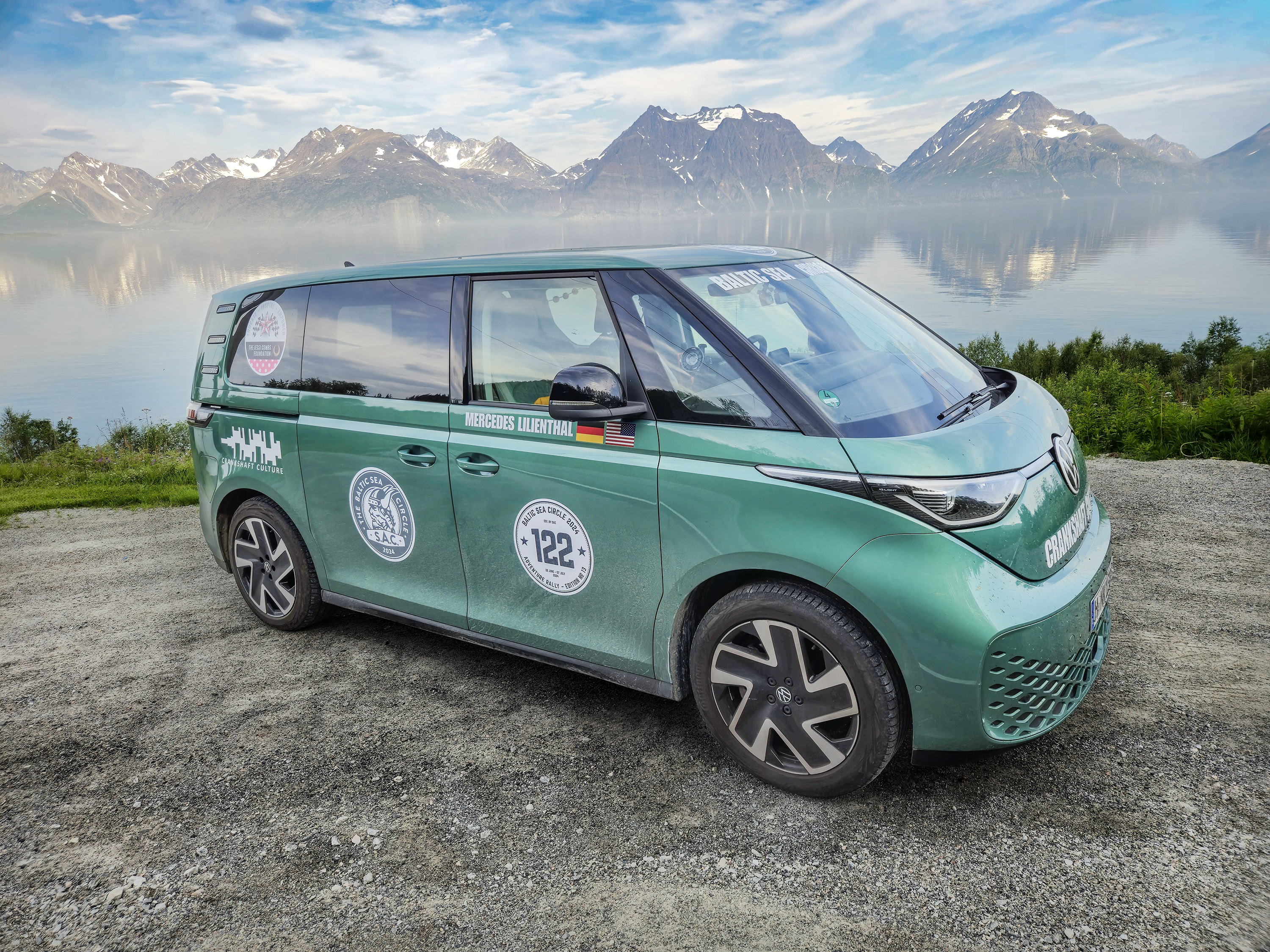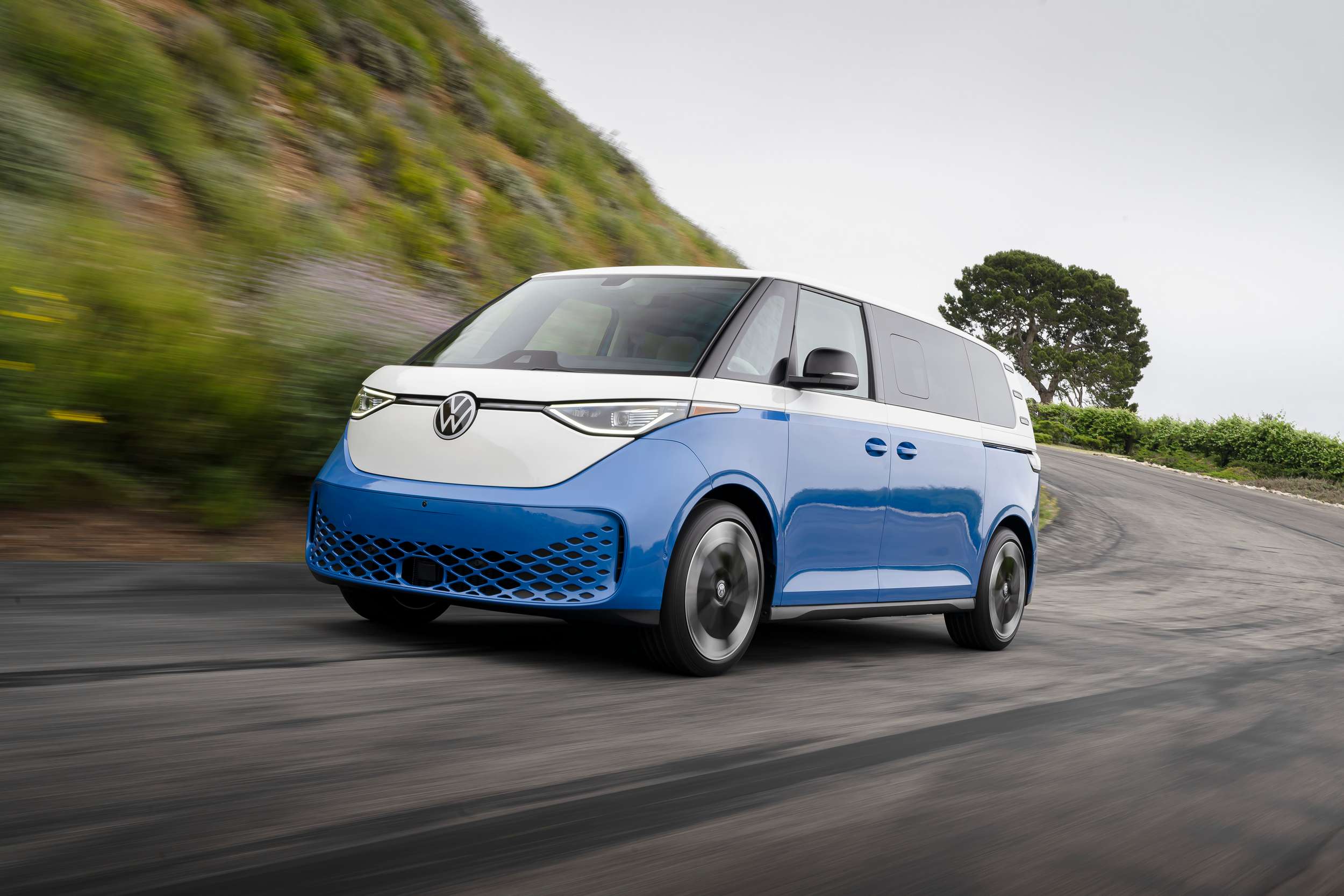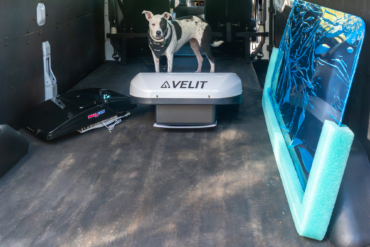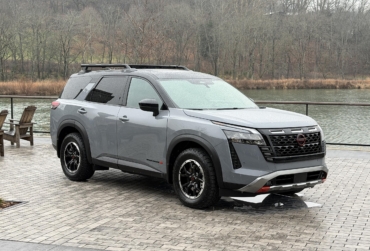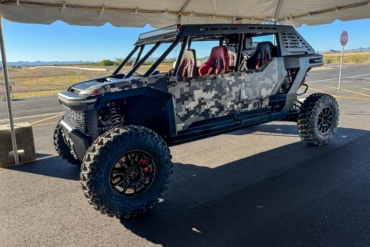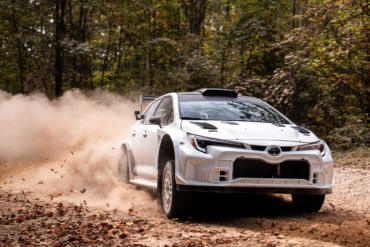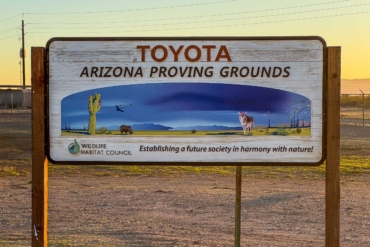The great thing about traveling with a van (we’re still using the term “van life,” right?) is the freedom to live and work out of your vehicle and move from place to place. As long as you’ve got fuel in the tank and food in the fridge, you can keep on going.
But, what if your van was powered by batteries instead of gas or diesel? Could you travel long distances and still live the semi-nomadic van life in an electric vehicle?
My wife, Mercedes Lilienthal, and I entered a 7,500km (4,660-mile), 16-day road rally covering nine countries — and we’d do it all in an electric van, a 2024 Volkswagen ID. Buzz, to find out if it’s possible.
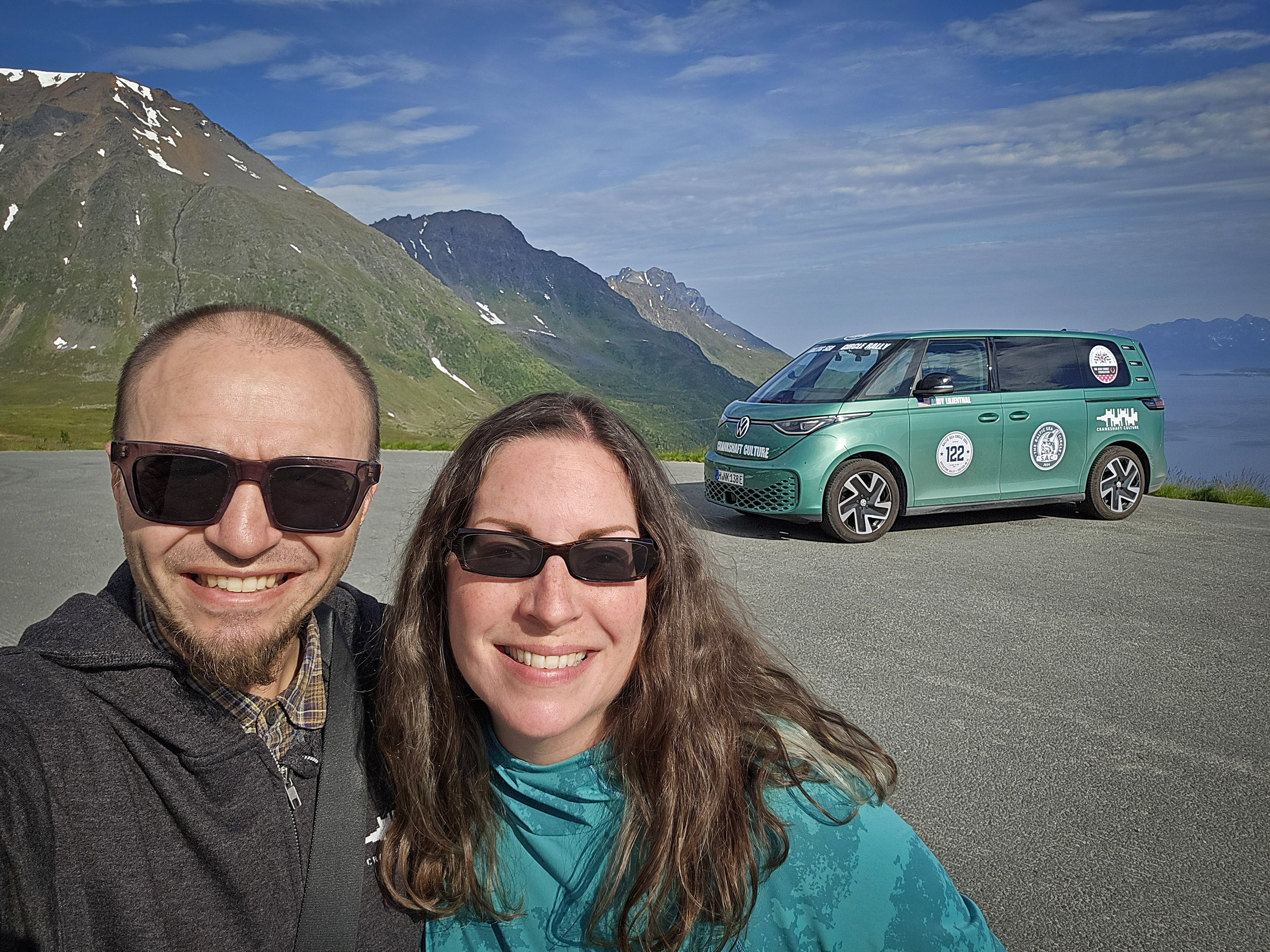
The Van: 2024 Volkswagen ID. Buzz Pro
Before the rally, we contacted Volkswagen about borrowing an ID. Buzz electric van to compete in Superlative Adventure Club’s 2024 Baltic Sea Circle Rally, and they agreed.
Our Bay Leaf Metallic Green ID. Buzz Pro was a short-wheelbase 2WD single-motor model from early 2024. It had an 82kWh battery pack, 201 horsepower, and had a range of up to 263 miles. Volkswagen also included a Ququq (pronounced “kook kook” like the sound of cuckoo clock) “camping module” for us to sleep on and cook out of. More on that later.
Our ID. Buzz had two captain’s chairs up front and a middle bench seat, which we folded down so we could deploy the Ququq’s bed and have more room for our gear, cameras, and the myriads of European snacks we’d buy.
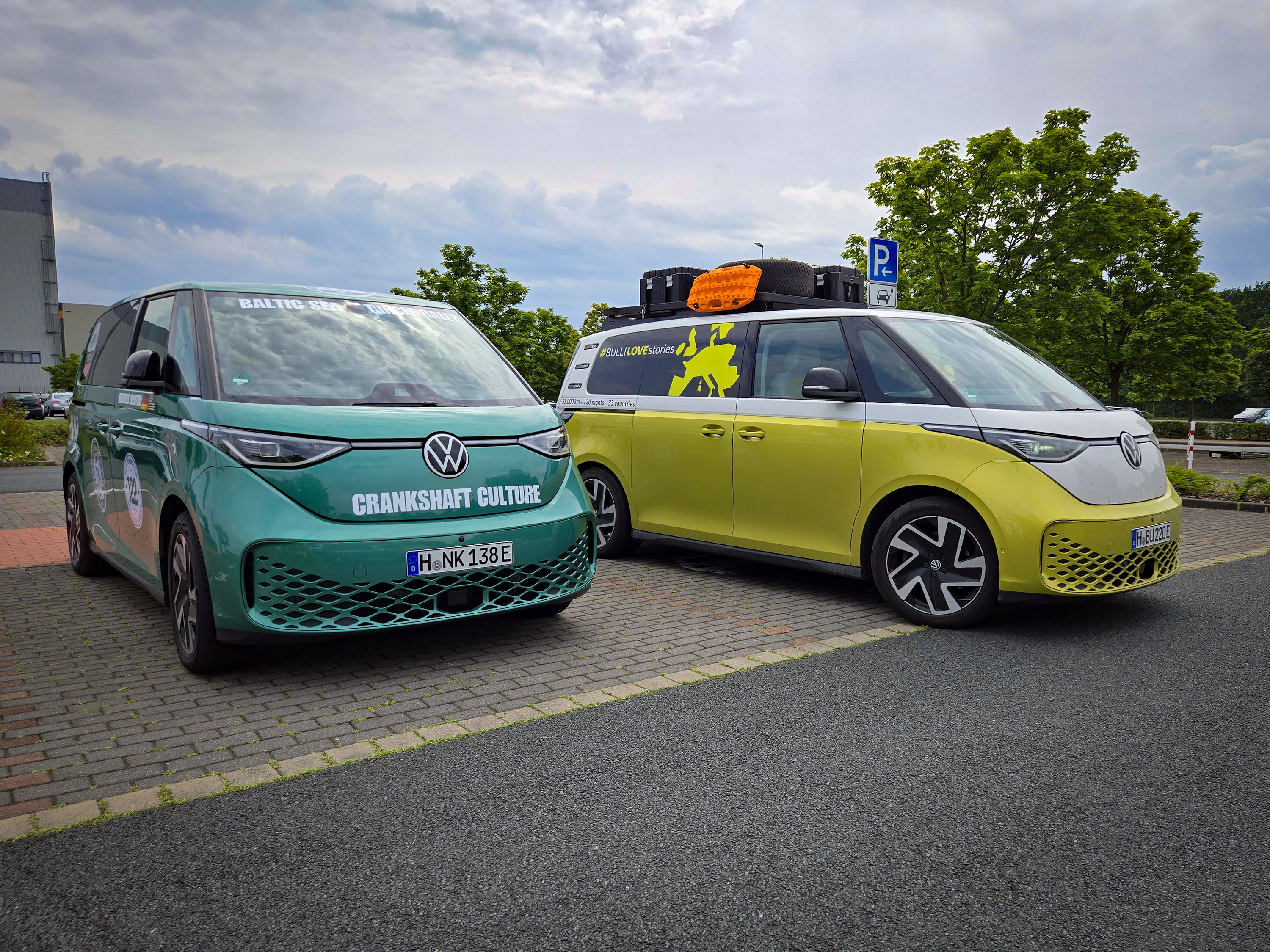
The ID. Buzz has been on sale in Europe since 2022. North America will get it at the end of 2024, as a 2025 model year vehicle. But, we’ll only get the long wheelbase version — 9.8 inches longer than the model we used. It’ll be available in 2WD or AWD and have a larger 91kWh battery pack. Power is said to range between 282 horsepower on 2WD vans and 330 horsepower on AWD models.
The Route: 9 Countries, 16 Days, 4,660 Miles + Charity
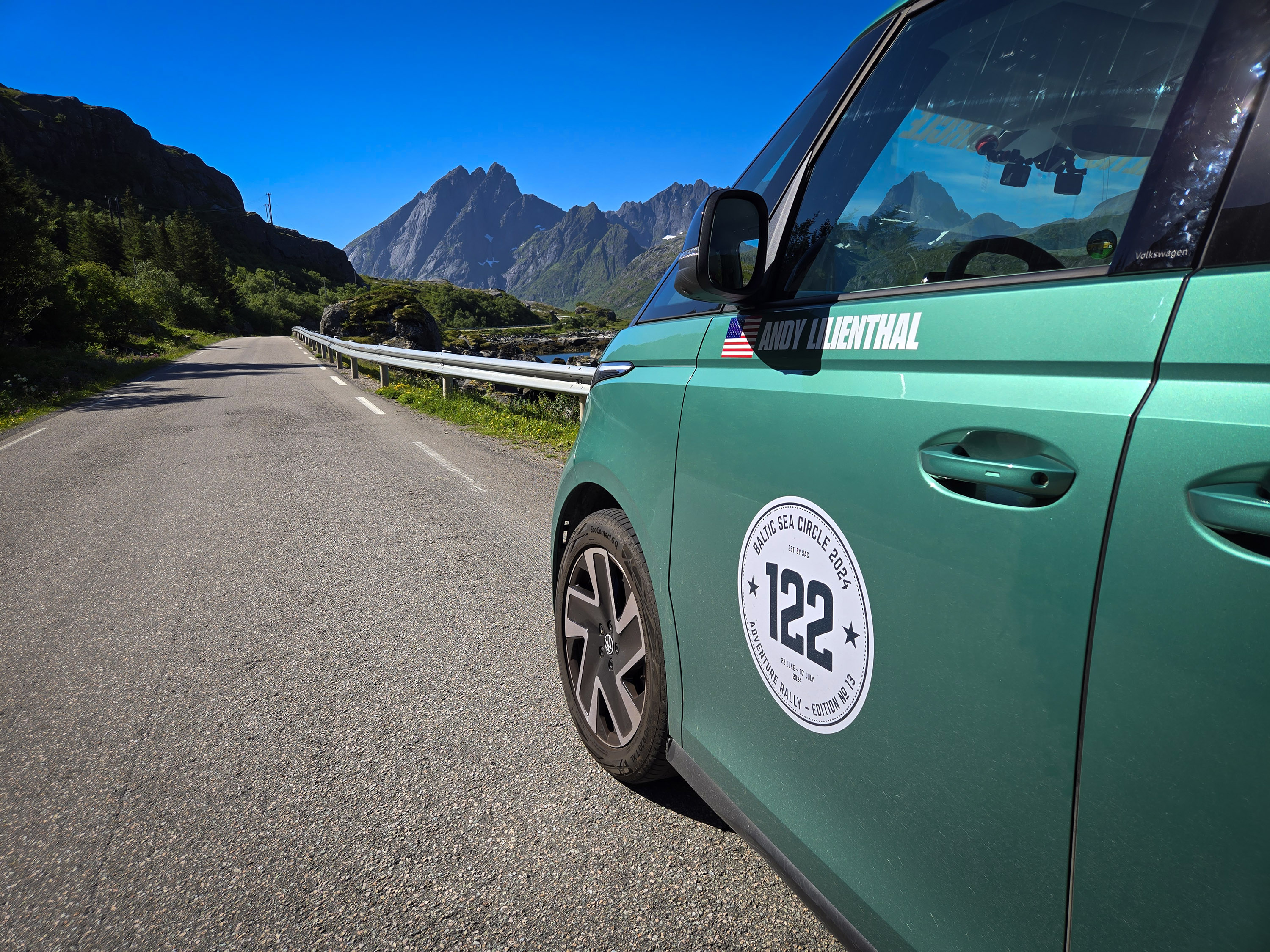
Germany-based Superlative Adventure Club runs the Baltic Sea Circle Rally (BSCR). We knew it would be far different than other rallies we’d done in North America, like the Alcan 5000. There’d be language barriers, different currencies, and we’d need to regularly charge an electric van. We’re used to traveling in a camper van, but this would be an entirely different ball of electrified European wax.
The BSCR started outside of Hamburg Germany, and then wound through Denmark, Sweden, Norway, Finland, Estonia, Latvia, Lithuania, Poland, and back to the finish line in downtown Hamburg. Vehicles had to be at least 10 years old, with more points were given to older cars. But, there was an EV class without an age cap, which we were in.
The rally had daily challenges, a spirit award, and other ways to earn points for this lighthearted competition, but really, it’s all about fun and adventure. The two most essential rules? Avoid using motorways and stick to paper maps to find your way. GPS/satellite navigation isn’t allowed.
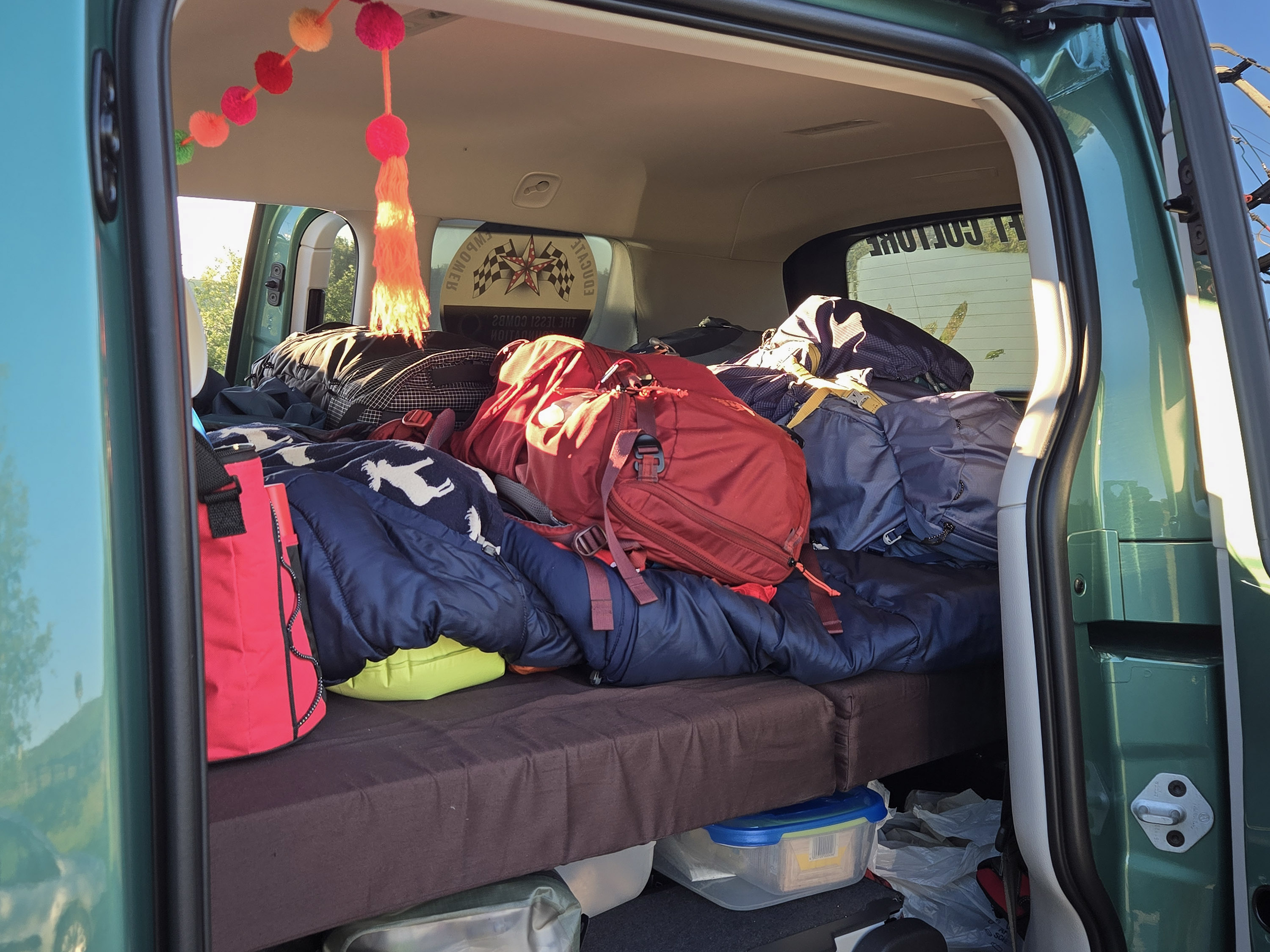
The route was a choose-your-own-adventure affair, with the included road book offering suggestions on which towns/locations to stay for the night and interesting sights to see along the way. There were two parties along the route where all teams could come together and share food, drink, and tales from the road.
Superlative Adventure Club also asked each team to raise 500 € ($544 USD) for charity. We selected The Jessi Combs Foundation, and raised over $3,200 USD.
Can This Trip Be Done in an EV?
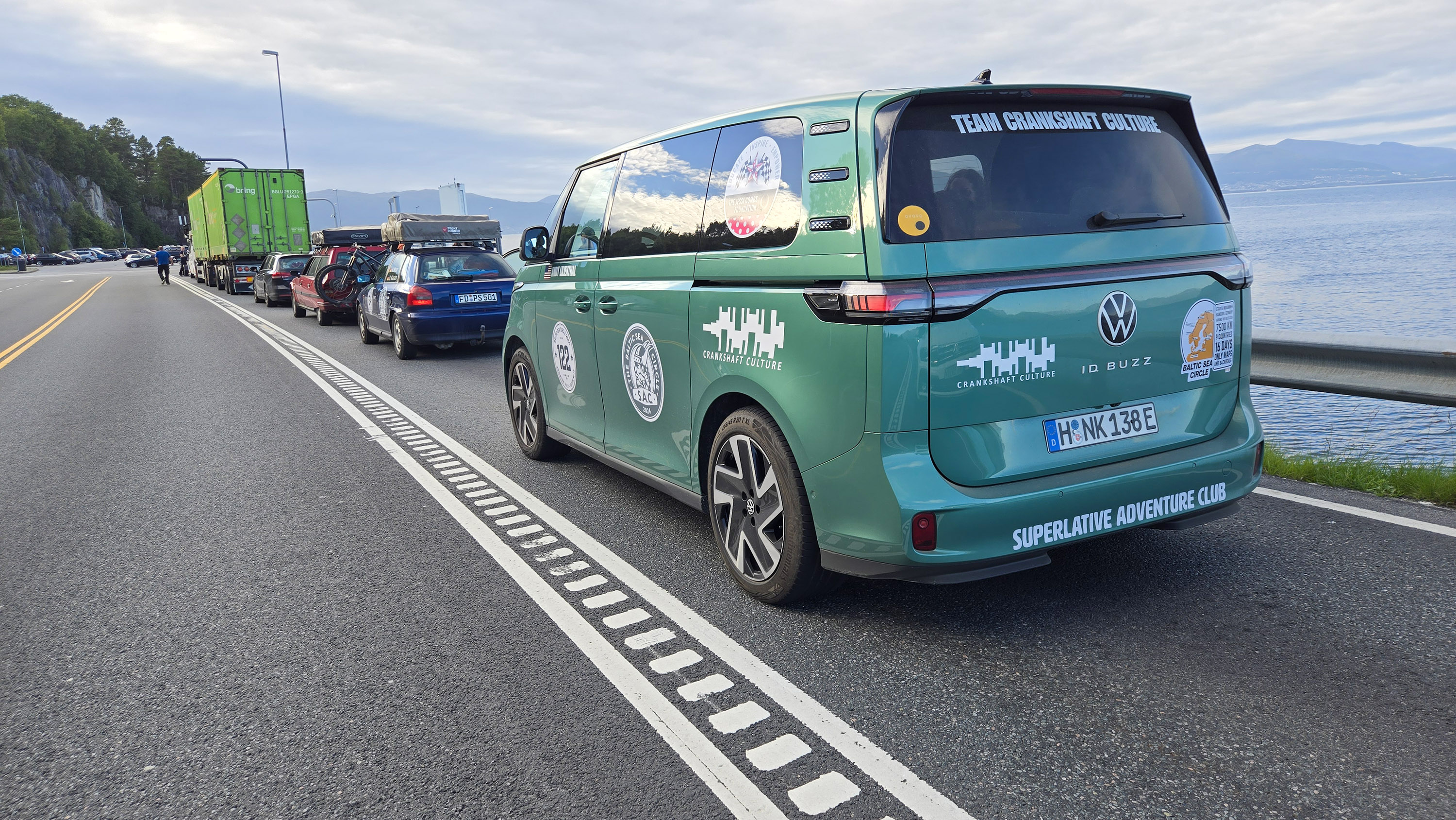
We weren’t the first team to campaign an EV during this rally, now in its 13th iteration, so we knew it could be done. However, we would be the first Americans to do so, and this year, we’d also be the only EV among 140 teams.
Honestly, I was initially hesitant to do a trip of this magnitude in an EV. Research revealed Europe would be a mishmash of charging stations operated by a slew of independent companies. Each would have its own proprietary apps and RFID keys or charging cards strewn across the different countries and regions.
Few chargers would let you pay via credit card, instead requiring you to install their app. We also couldn’t download the apps or order the RFID cards before leaving the U.S. due to app location restrictions on the Google Play store.
Thankfully, our nephew, Paul Cronie, who lives in Germany, loaned us a German-based iPhone. We provided an extensive list of apps we’d need; he installed them and sent away for the EV charging cards so we could charge.
Next stop? Germany.
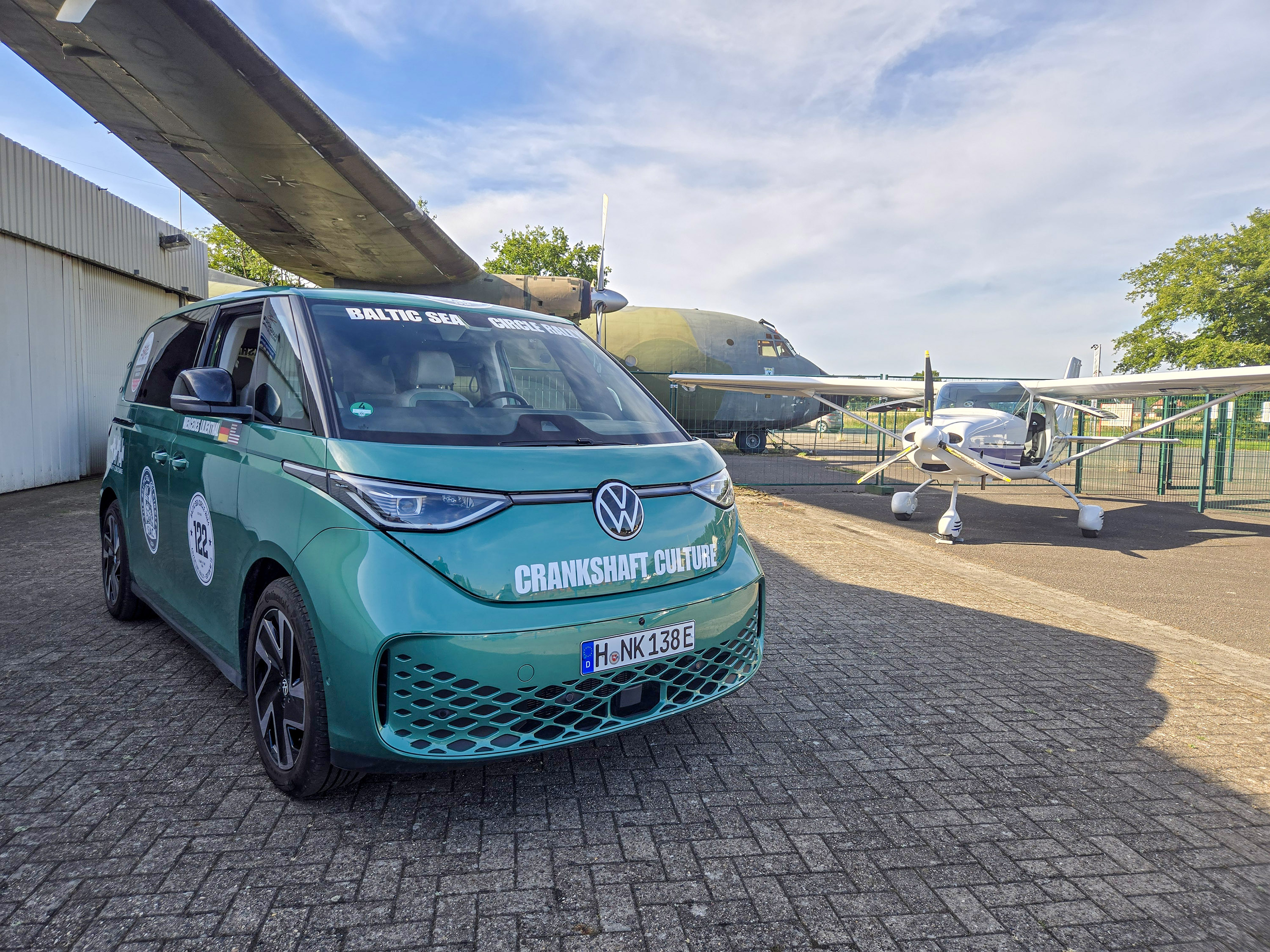
Charged Up & Ready to Roll With a Strategy
We silently left the starting line armed with a fully charged ID. Buzz, a mostly charged German iPhone, and a stack of apps and charging cards for the van. The first challenge was booking a ferry from Germany to Denmark. Thankfully, my navigator and German-American dual-citizen wife, Mercedes, speaks German. We aimed for Falkenberg, Sweden, as our stop on day one.
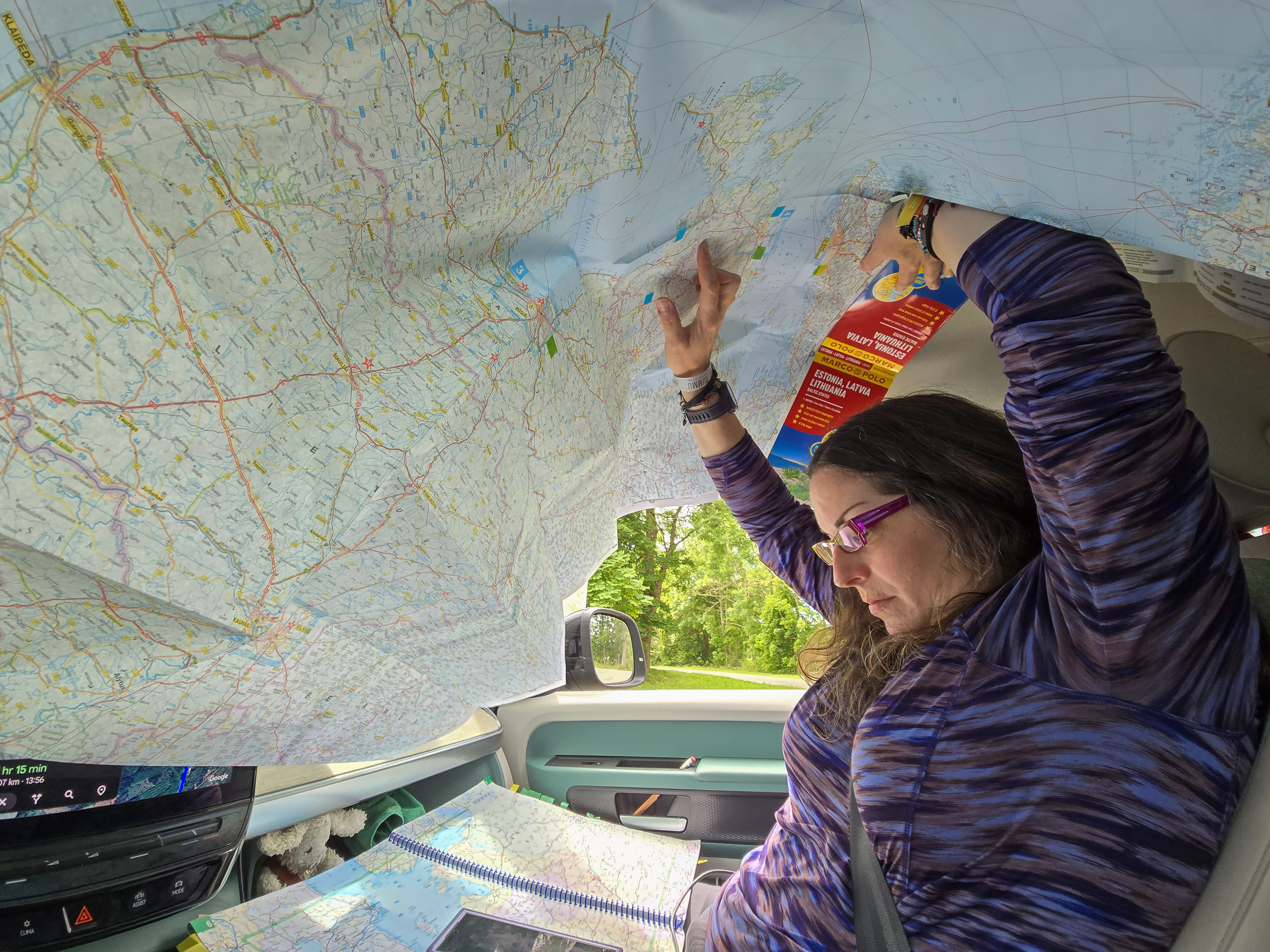
Our EV rally/van life strategy was to be conservative with speed for maximum range, and to bump-charge to 80% most of the time. This would be the most efficient use of time. We also wouldn’t push too far on range for fear of running out of battery.
We’d try to stick to DC ultra- or hyper-fast chargers (150kW+) and look for multiple charging opportunities in cities. This way, if our charger of choice was out of order, we’d have a second option. We had paper maps of each country for navigation, but had to use digital apps to locate charging stations.
My EV anxiety was temporarily eased at our first charging spot in Bogø, Denmark, as one of our charging cards successfully worked to initiate the ID. Buzz’s charge session. From there, we continued north to Helsingborg, Sweden, to charge again, this time at one of the many Circle K convenience stores. But we soon realized that, despite hours of research, charging across Europe was even trickier than we expected.
Euro Charging Challenges
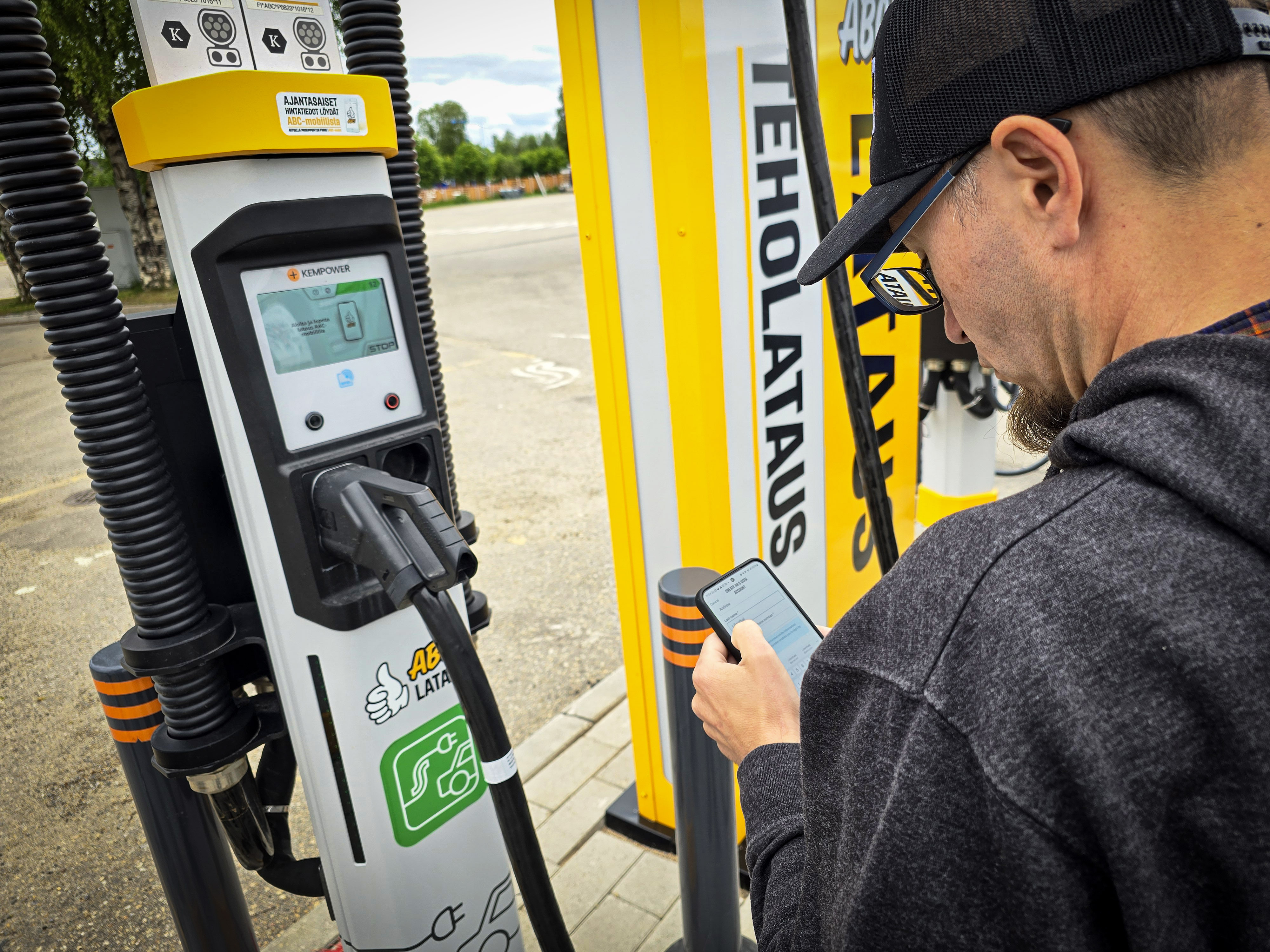
It turned out that none of our apps or charging cards worked at Circle K. There was a QR code on the charger to download the right app, however.
I thought I’d attempt to get the app with my U.S. phone, thinking it’d be blocked like in Germany. Lo and behold, Sweden allowed me to get the Elton charging app. I set it up, added payment info, and we were charging. This, however, took significant time and was a taste of things to come.
Throughout the 16-day rally, finding charges wasn’t an issue; it was getting chargers to work, which was tough — nearly every station had its own app, and most weren’t ones we downloaded. By the end of our trip, we used 13 charging apps out of the nearly 20 we downloaded and set up.
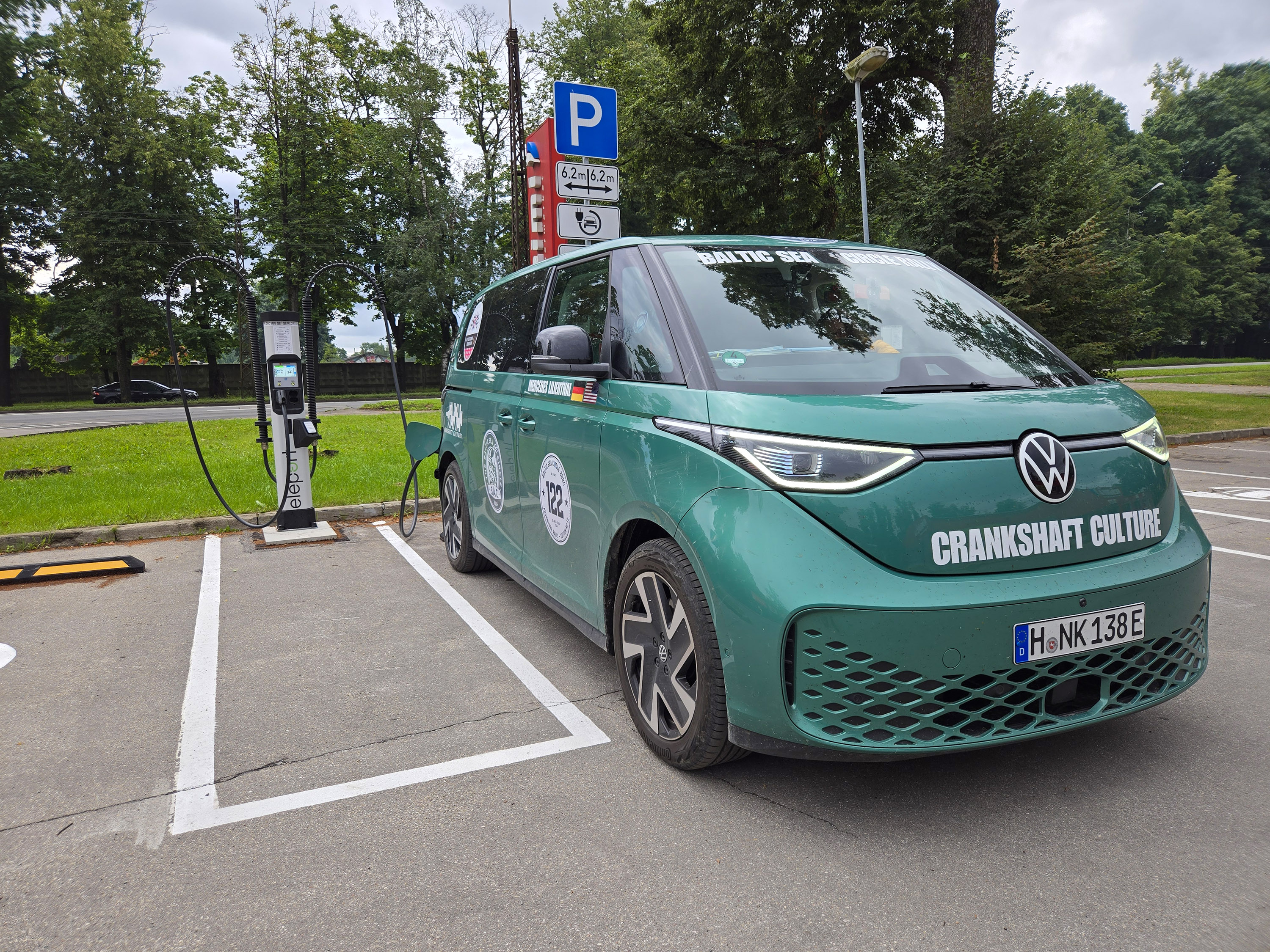
Things weren’t cut and dried, either. For example, we found the Elton app worked at Circle K stations in Sweden and Norway, but not in Estonia. In parts of Europe, cars with CCS plugs can utilize Tesla Superchargers, but Estonia, Latvia, Lithuania, and Poland aren’t included — ask me how I know. Shockingly, we did find a couple of chargers, mostly in Poland, that’d let you simply pay by credit card.
In a nutshell, Europe’s EV charging infrastructure is a large but messy patchwork of different providers with most requiring proprietary apps or charging cards. Without my nephew’s German iPhone, we wouldn’t have been able to do this rally.
Home Was Where We Parked It, Not Where We Charged It
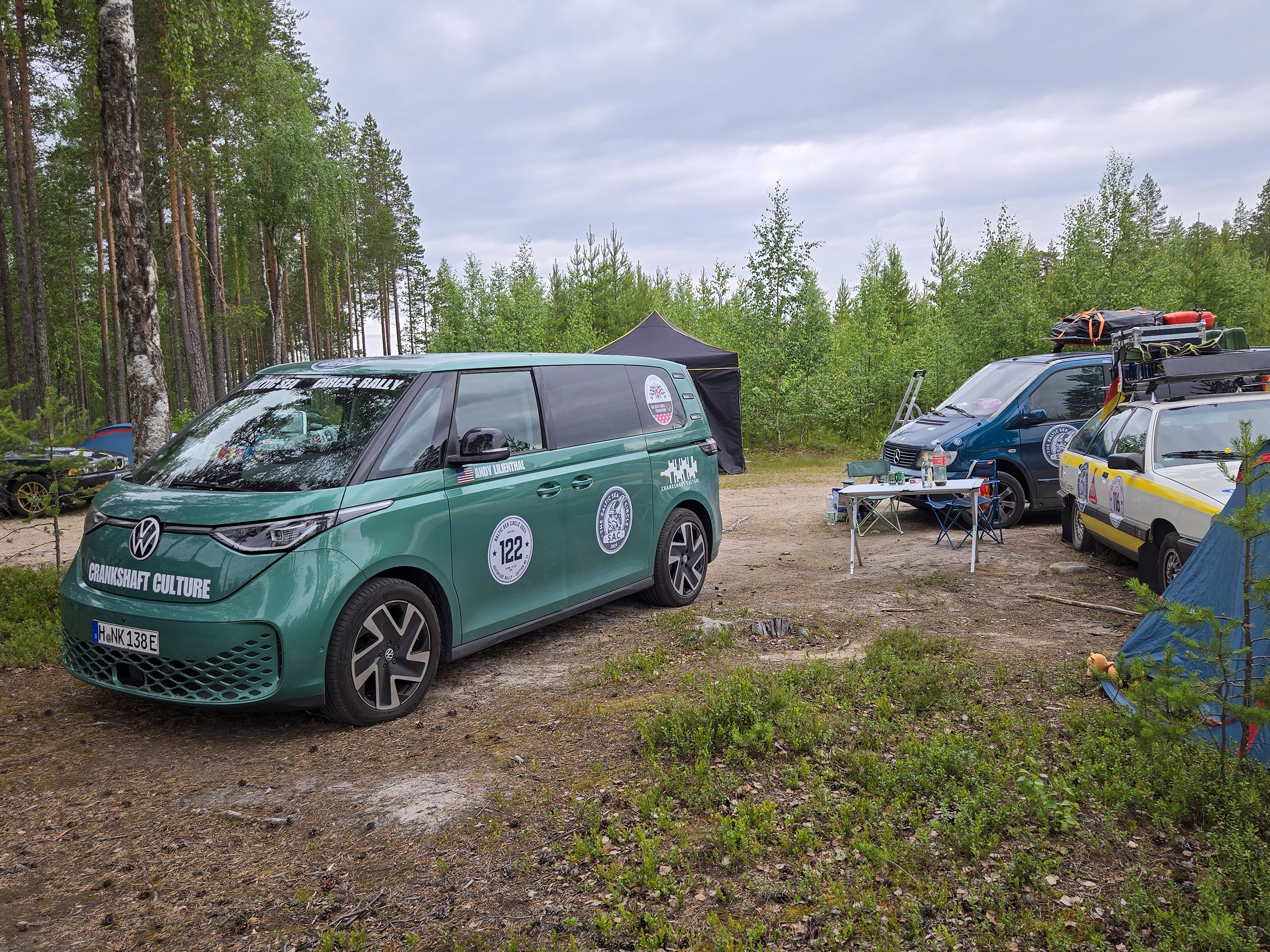
When it was time to turn in for the night in the Nordic countries, we took advantage of the ability to wild camp pretty much anywhere that wasn’t on someone’s property. For example, we parked and slept in Falkenberg, Sweden, along the sea, near Lillestrøm, Norway, along a river, and outside of Rovaniemi, Finland, in the woods.
We also stealth camped downtown in Bodø, Norway, while waiting for our 3:15 a.m. ferry to the Lofoten Islands. We spent the night at a few organized sites with other rally participants, which afforded us much-needed showers. We also had 3 nights in Airbnbs — 2 nights in Helsinki, Finland, and one in Riga, Latvia.
A few organized camp sports had electricity where we could’ve paid to charge our van on standard AC power at a glacially slow 2kW (the ID. Buzz can take up to a 170kW charge). We opted to stick to public fast charging.
While all the teams selected their own motorway-free routes on this rally, we had to plan ours around charger availability. We employed third-party apps, such as ChargeFinder and ABRP (A Better Route Planner), as well as the digital map from each EV charging app. Before finding a place to camp or stay at night, we generally charged the ID. Buzz to 100% (versus 80%), so we were ready to go in the morning.
Food for Thought & Travel
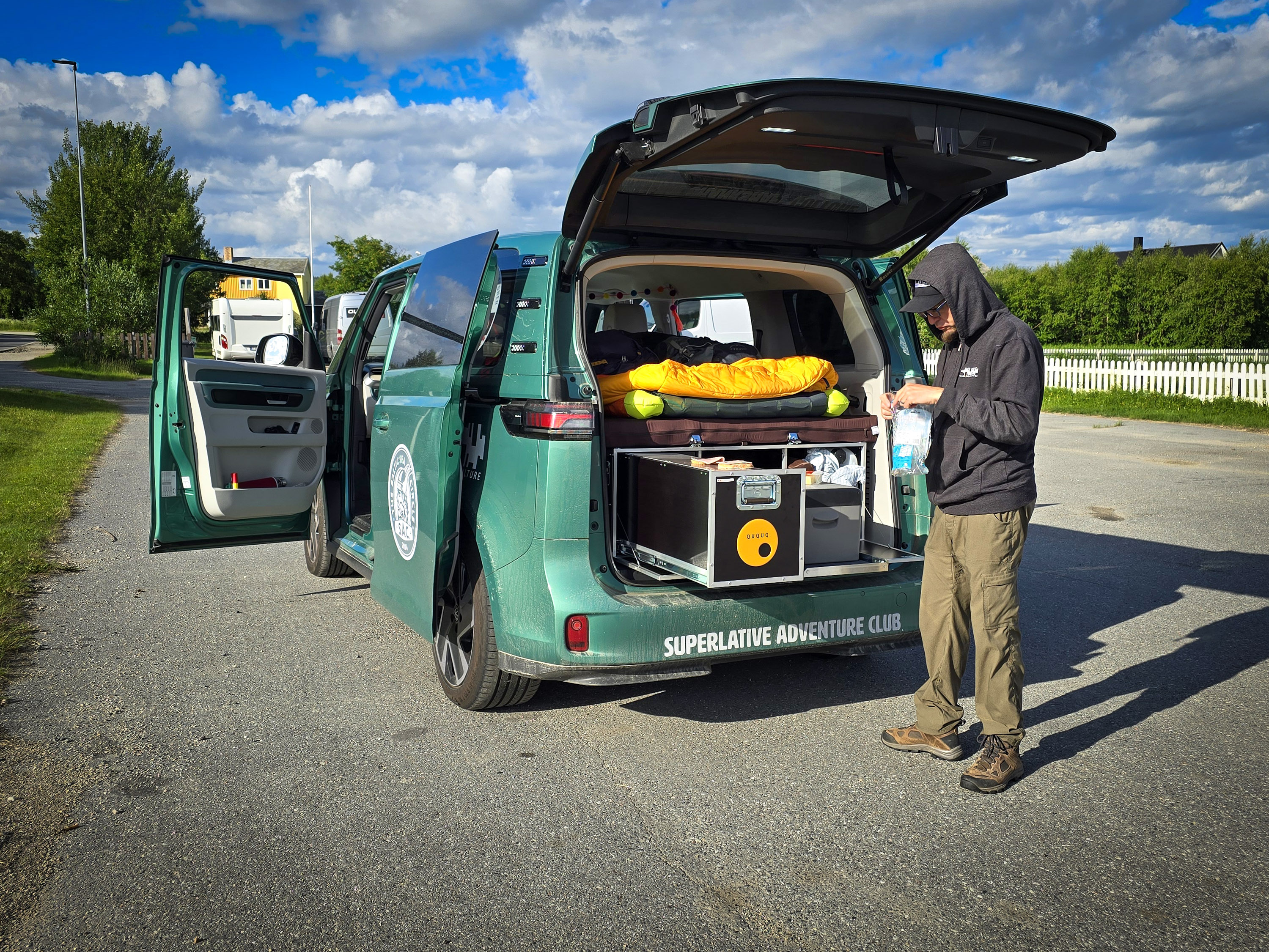
We shopped at local grocery markets throughout the trip, and kept our tiny fridge well stocked with fresh food and local beer. We also tried the local foods when possible, including regional breads, cheeses, and meats.
Fun fact: The 7-11 stores in Norway had incredible smoked-salmon-and-egg sandwiches on beautiful bread. Why people would still opt for McDonald’s or Burger King is beyond me!
Fast Chargers = Slower Pace & Long Days
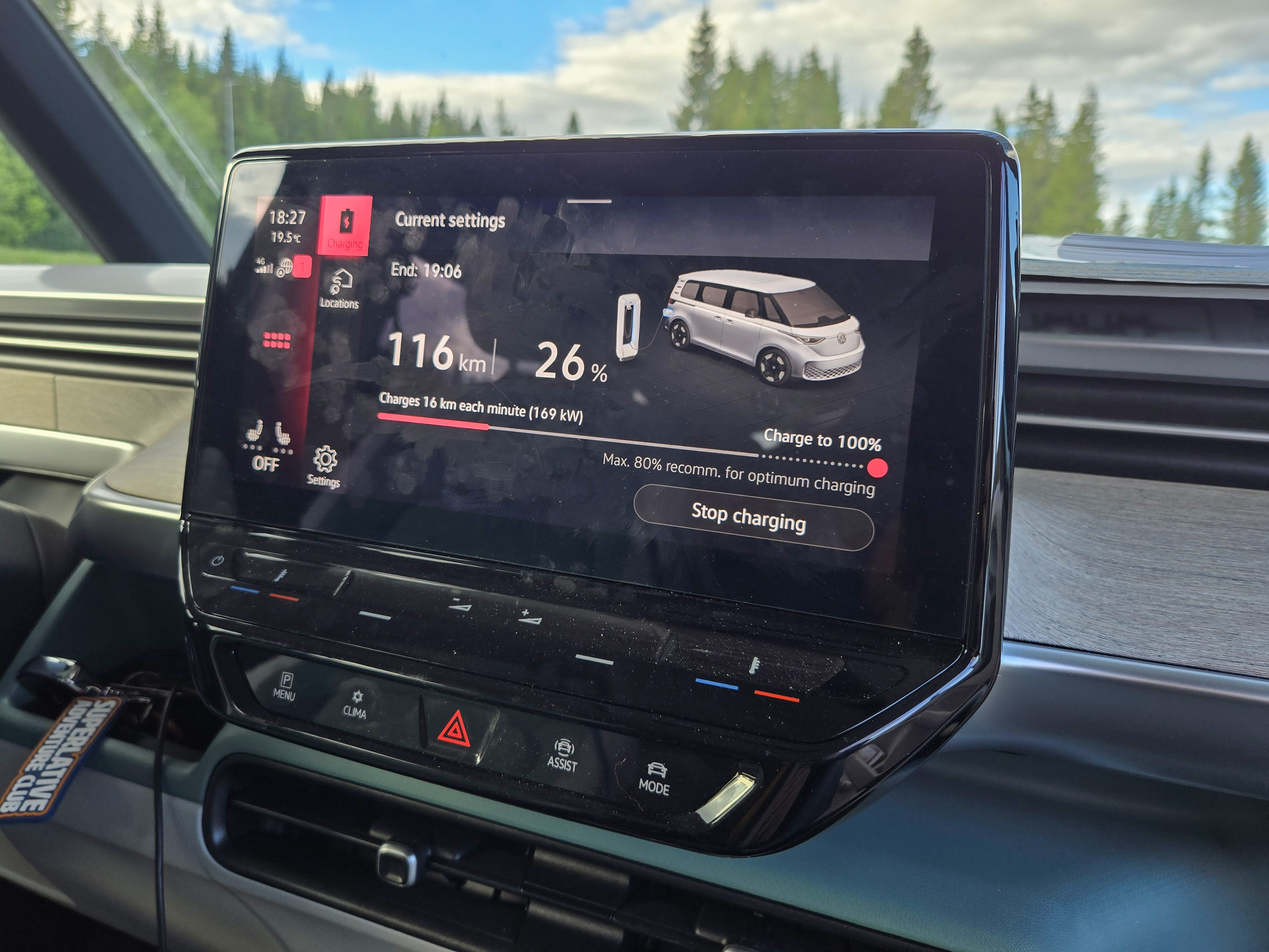
To complete the rally in 16 days, we’d need to average about 500 km (311 miles) a day. That sounded simple compared to the 600-650-mile days on the Alcan 5000 Rally. However, the BSCR was more exhausting than anticipated. This was partially due to lots of slow speed limits, backroads driving, and the fact we had to stop to charge the van regularly.
Each day, we spent 2-3 hours charging, which made it hard to keep up with the rally’s pace. To counteract this, we’d get on the road a few hours earlier than most teams, who were still sleeping at their campsites.
Inevitably, ralliers would catch up to us later when we stopped to charge. The early mornings, constant charge finding, and late nights quickly became exhausting. Nonetheless, even if you were not on an endurance rally, van life in an EV will be at a slower pace.
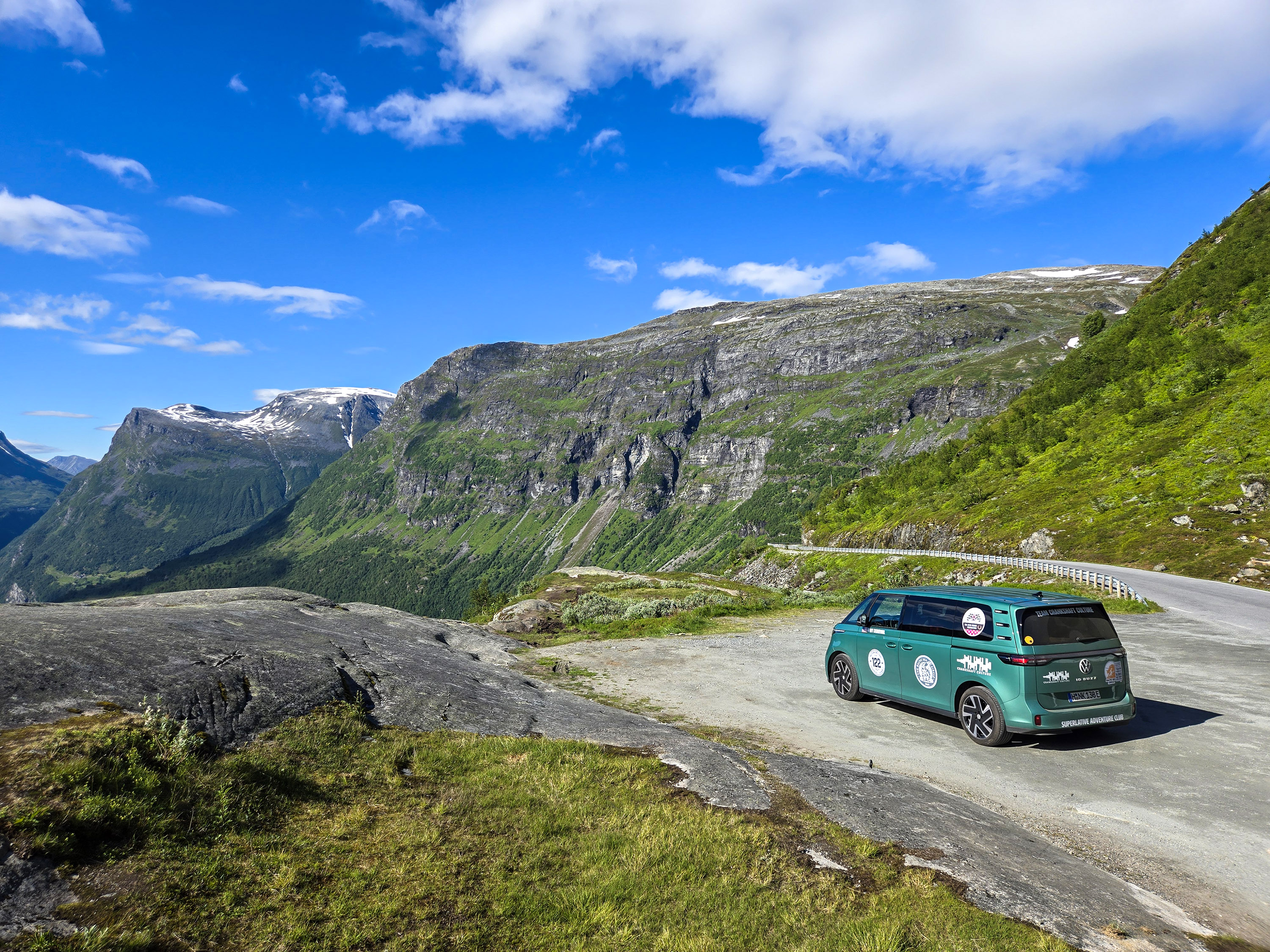
We still budgeted time to see things: the Arctic Circle in Norway and Finland, the incredible Geirangerfjord in Norway, RUMMU Quarry in Estonia (a former Soviet prison turned beach), and walking Helsinki, Tallinn, and Riga. But this wasn’t a sightseeing trip. This was a road rally, and we had places to be.
Living the Electric Van Life
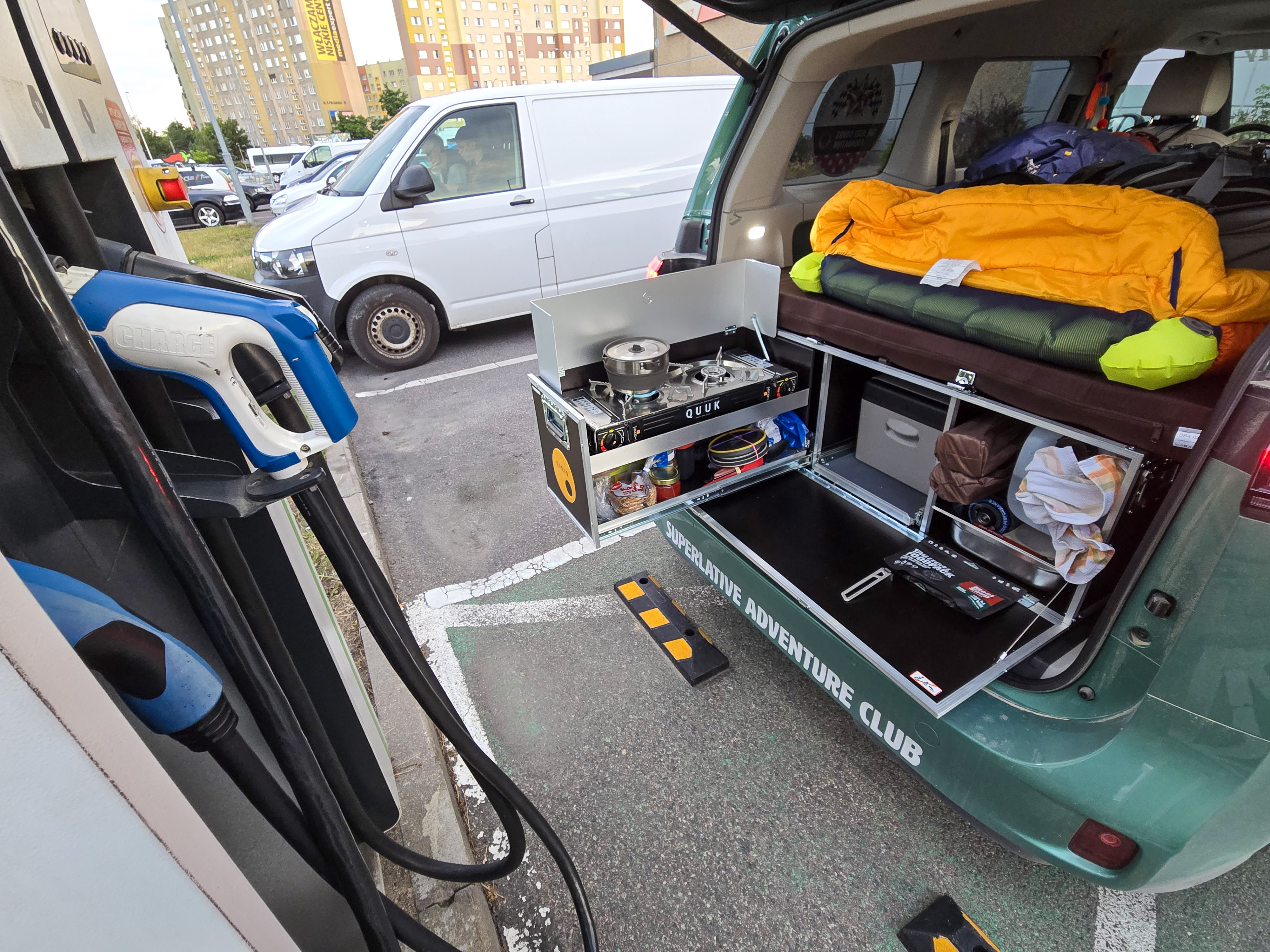
Our hectic pace didn’t allow Instagram-worthy meals cooked out of the back of a van in a picturesque Euro locales. Much of our cooking and eating was actually done while charging in parking lots — far from scenic — but quite efficient. We’d plug in, open the back, and eat fresh salmon, cheese, and bread for breakfast or lunch.
Our van included a German-made Ququq BusBox-4, a removable “camping module” designed specifically for the ID. Buzz. It included a powerful double-burner butane stove and a spacious pantry underneath it for dry goods, pots, and utensils.
The van’s continuous 12V plug powered a small slide-out refrigerator. There were two stainless steel wash basins and two 10L plastic water jugs, albeit they leaked a bit from their plastic caps. The Ququq system helped the ID. Buzz become a practical, comfortable camper van during our journey.
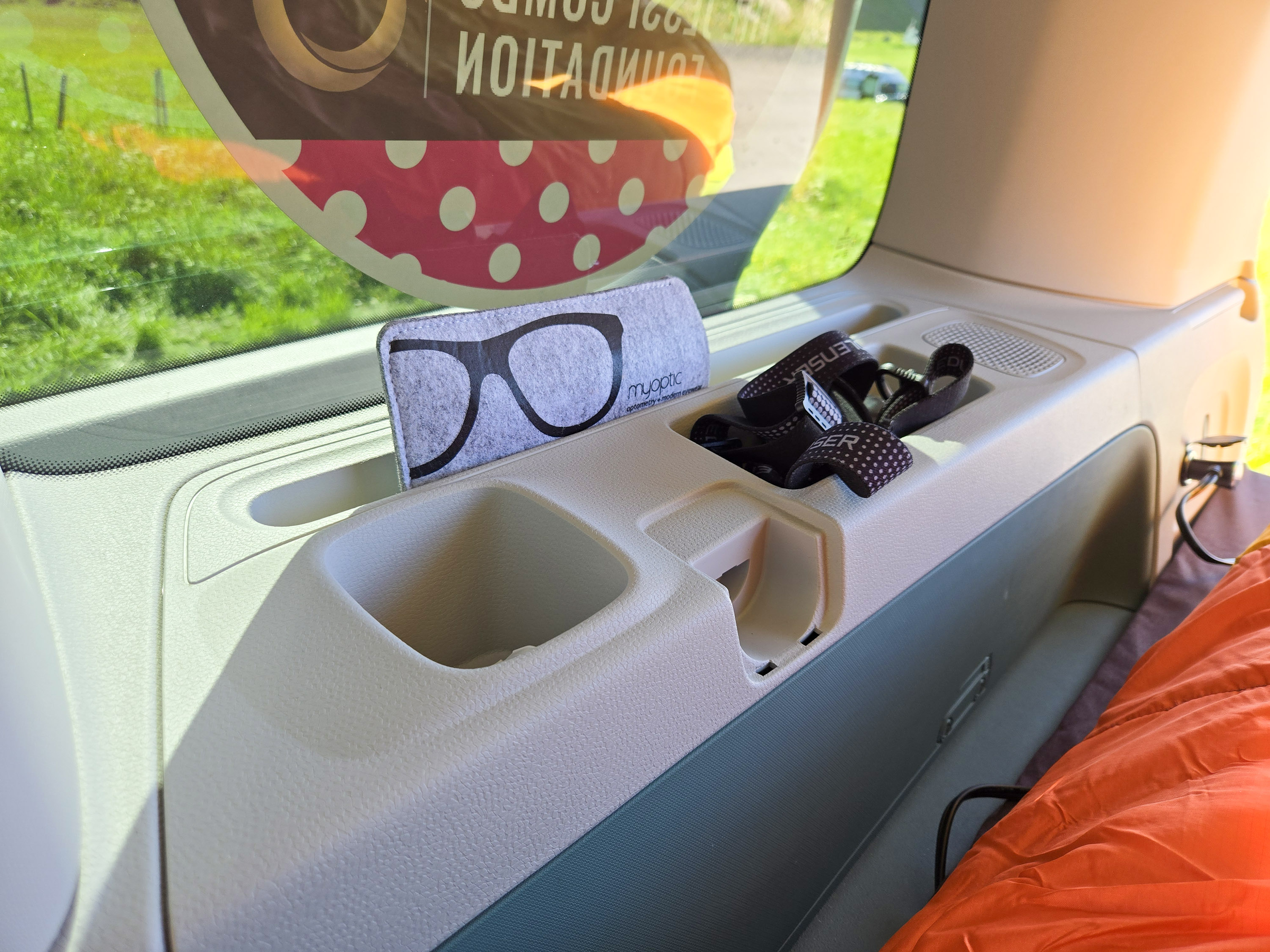
The ID. Buzz had a host of built-in van-life-ready niceties. There were no fewer than seven USB-C plugs for charging phones. There was an AC outlet under the passenger’s seat, although it was easy to knock out a plug with your feet when in use. The center console between the captain’s chairs could be removed, rotated 180 degrees, and had cupholders and two storage bins inside.
Toward the van’s back, there were cupholders and cubbies great for wallets, keys, and our glasses when we went to bed. There were USB-C outlets here, too. I would’ve loved to have that USB-C power on all the time, so we could’ve charged our phones while we slept.
Downsides? The interior had a host of light colors which could easily become dingy. If you locked the vehicle, you needed to disable the interior motion sensing. Otherwise, the van’s alarm would go off.
On the Move
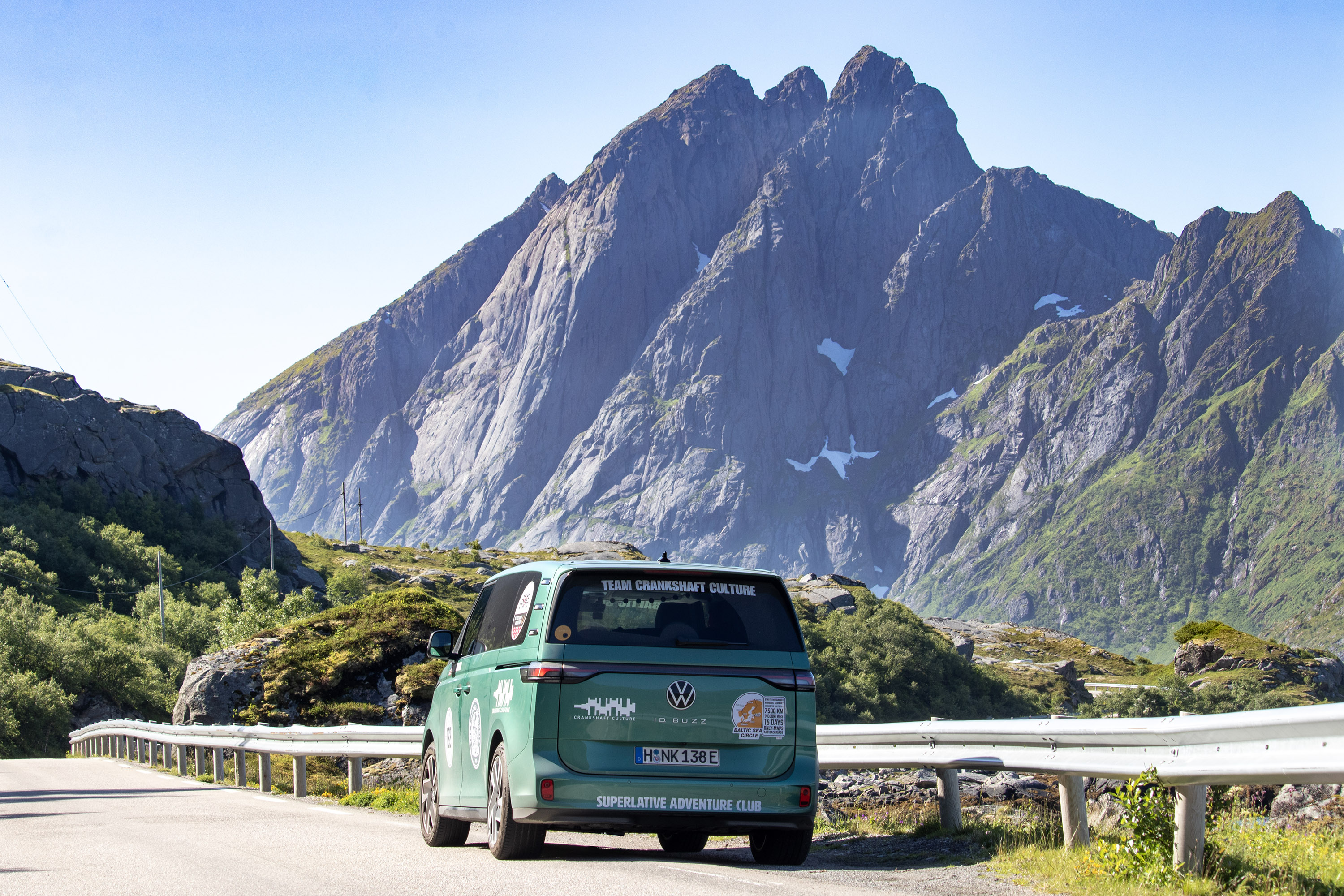
When it came time to make miles, the ID. Buzz was a terrific traveling companion. Our ID. Buzz Pro was an early 2024 model, which had 201 horsepower motor and 0-62 time of just over 10 seconds. (VW has since bumped the base output to 286 horsepower in the German market.) The van easily cruised on Europe’s roads, including the German Autobahn.
The van had run-flat Continental tires, so we didn’t carry a spare, though we did have a tire patch kit and tools.
Driving dynamics were very good — a common VW trait. It handled better than expected, and the steering was well-weighted, making our back-road transits more entertaining than I anticipated, especially in Sport mode. So, while this is a practical van, it was also fun to drive. The comfortable seats and admirable ride really helped on the long days.
As with most EVs, the ID. Buzz had tons of tech. Some of it, such as the cruise control and climate control, offered a steep learning curve and a healthy dose of frustration. Other bits, such as the charging interface, were easy to use.

EV Van Life: Doable, Impractical (For Now)
The bottom line is this: you can live your van life dreams in an EV, or at least an ID. Buzz on a 7,500km European road rally. The question is, would you want to?
There’s more time spent charging and you must find chargers — and hope they work. In a rally scenario, both can lead to anxiety and frustration. If you were just living the digital nomad life, maybe it wouldn’t be as much of a concern. And as electric battery tech gets better, chargers become more abundant, and range gets even greater, the ease of long trips (and even van life) should get easier.
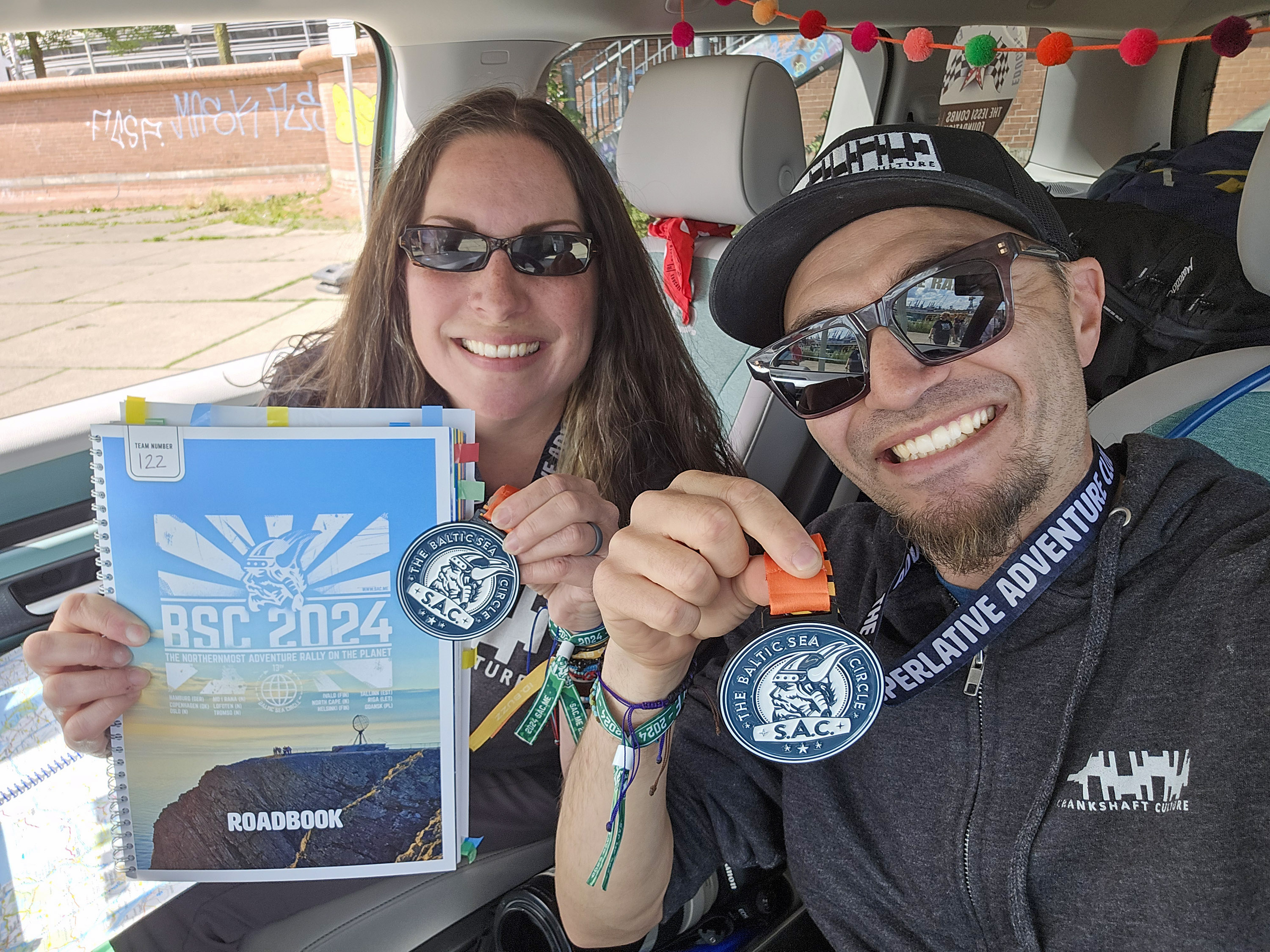
FYI, we took 47th place out of 140 entries; a total of 120 teams crossed the finish line.
EV Van Life: A True Adventure
After spending over 2 weeks in nine countries, and driving around 5,000 miles, I can tell you long-distance travel in an electric van on a rally is a hell of an adventure. It’s a different kind of adventure than camping in the wilderness or off-roading in the middle of nowhere. But, it’s an adventure nonetheless.
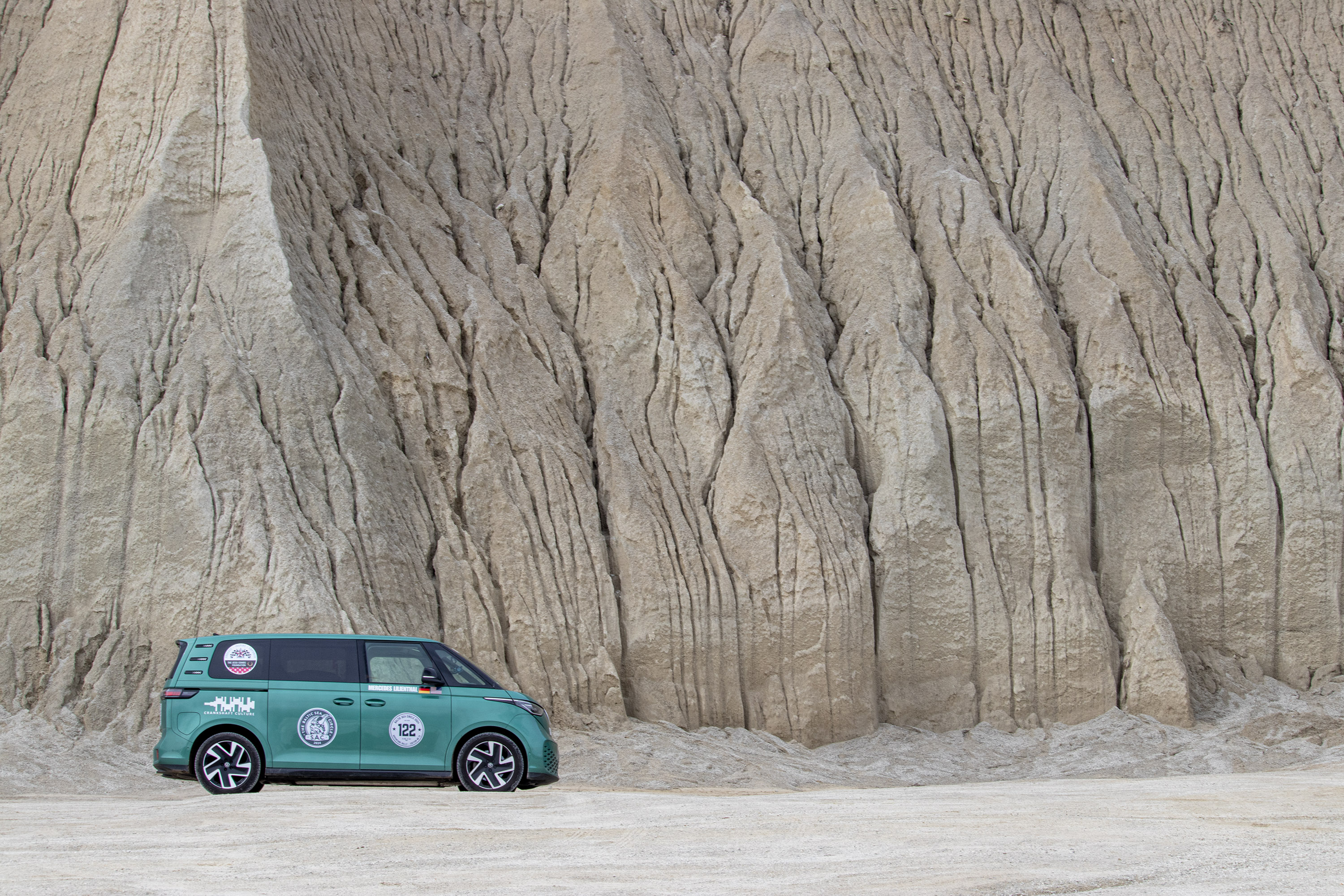
The Baltic Sea Circle Rally was incredible. There was camaraderie, epic scenery, and extraordinary cultural experiences — I wholeheartedly recommend it. The ID. Buzz was a great traveling companion, versatile and practical as a camper van.
But, unless you’re trying to prove a point (or are an automotive journalist), for long-distance excursions, you might want to stick to an ICE vehicle for the time being. EV van life is possible, just not practical. Yet.
